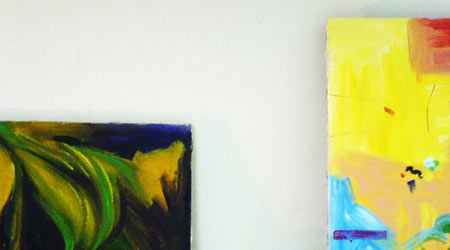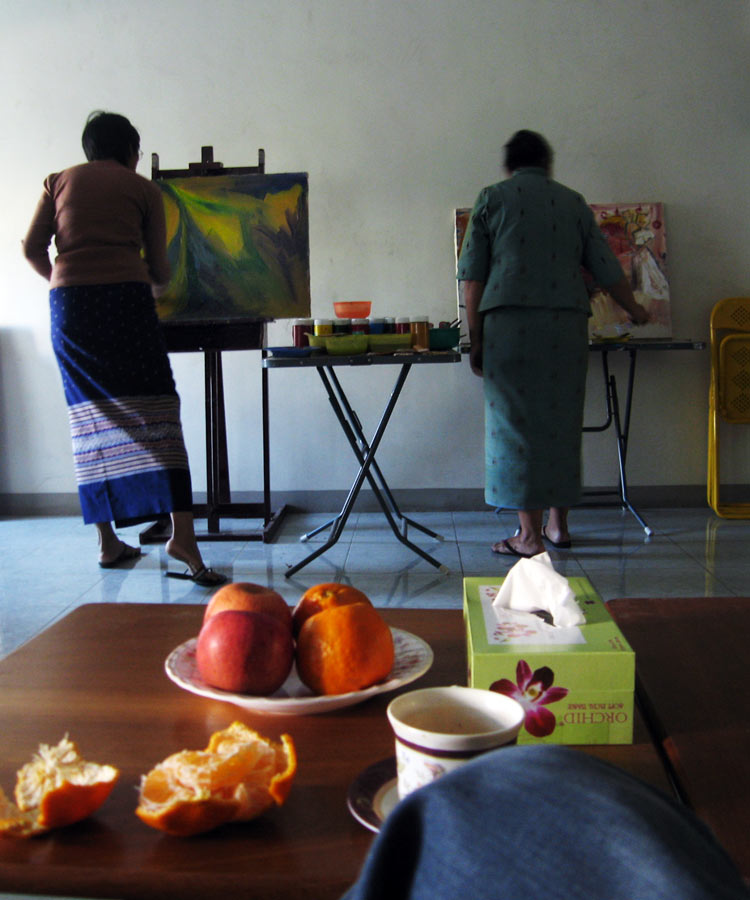

Rarely have we met so many technically skilled painters as in Burma. State art schools teach realistic painting and excellence is passed on from master to student. Recurring and encouraged themes are Buddhist monks and pagodas, beautiful landscape scenery and stereotypical portraits of the ‘national races' of the Union. Contemporary art (as it is known it in the West with performance, conceptual art, video, interactive art and so on) is not part of the curriculum. It is our firm impression that individual creative expressions occur despite, not thanks to, the Burmese art education.
We rarely use the brush and canvas ourselves, but we wanted to find ways to collaborate with Burmese painters. In Mandalay we presented an idea to two excellent painters. We wanted them to make portraits based on not on models or photos, but on our words describing two persons. They agreed to spend two hours with us. We, as the storytellers, had one person each in mind and prepared ourselves by jotting down notes on the person we would describe to the painters.
Erik started and Åsa went away. A timer was set to 60 minutes and as time passed he described a person by mentioning details and short anecdotes about looks, character and situations related to the person. After 60 minutes the painters had finished their first canvases and a new session started, this time with Åsa in the storyteller-sofa. As opposed to Erik’s fragmented storytelling, which came in paragraphs throughout the hour, Åsa spent the first twenty minutes trying to paint a picture in words about the person she wanted them to portray visually.
We ended up with four portraits, portraying two people and signed by the painters. The paintings are obviously imbued with the style of the painters, but our different rhythms of conveying information about the persons be portrayed clearly affected the outcome on the canvas. Afterwards, while the portraits were drying, all four of us sat down, laughed and asked Who is the artist?
In Burma we encountered few artists’ collaborations where several people work together from concept to production. In Rangoon there are several artist groups, but the members work individually and then help out arranging a group show once a year.
In Four Portraits all the different actors are needed to complete the work. At its best, collaboration means learning from each other. It allows multiple narratives to flourish, since all the participants have their own, first-hand experience of the project.
Four Portraits also stems from discussions about information exchange, imagination and interpretation. How is it possible to communicate a human being’s complexity from one person to another, translating from one medium to another? To be able to picture something other than the life you are living and the world you are living in, you need imagination. It cannot be taken for granted, or as George Orwell put it in one essay: “The imagination, like certain wild animals, will not breed in captivity”. A painter running a private art school told us that she, in contrast with the meticulous realism of the state art schools, welcomes her students by saying that In my school you can make big strokes with your brush and the paper you are painting on can be as big as you like.

Backseat painter